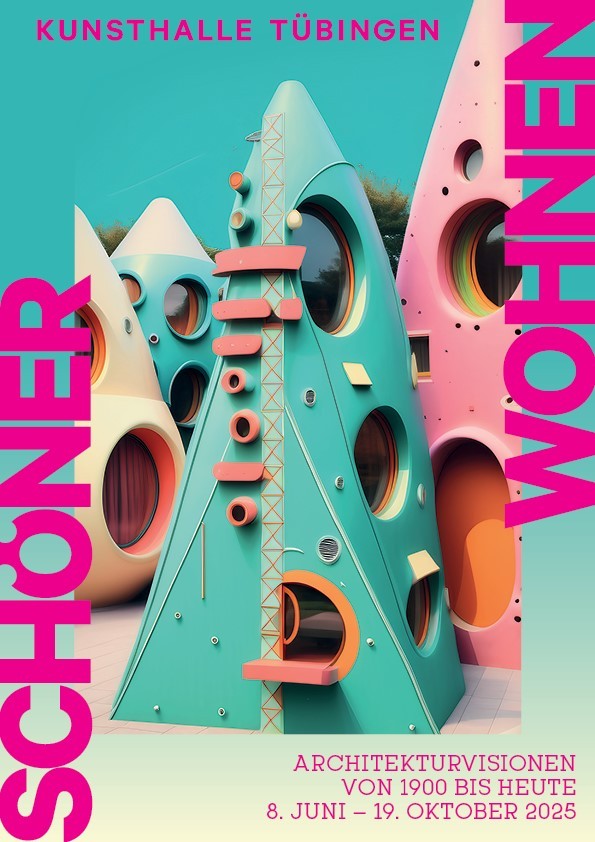Schöner Wohnen
The theme of habitation (Wohnen) is a more topical than ever. How and where we live influence our sense of well-being and shape our behaviour and our identity. Since time immemorial, artists and architects have captured their initial ideas of a future architecture in drawings. Architectural drawings from past eras, however, are not only a means of generating ideas or a medium for documenting building projects. As “catchment organs of internal and external life” (Aby Warburg) they also provide information on the attitude of the architect and on the spirit of the time. Adopting this cultural-scientific approach, the Kunsthalle Tübingen is focussing on the artistic architectural drawing as an art form of the past one hundred years.
On the basis of sketches as well as selected models and sculptures dating from the 20th century to today, the exhibition will highlight how social and technical change influenced artists’ and architects’ new habitation concepts and urban visions. For modernist architects are increasingly taking individual lifestyles and living spaces into account in their social contexts and, as it were, broadening the view – out of one’s own four walls in the direction of collective living contexts in urban surroundings.
The exhibition tour takes visitors from expressionist utopias of a future global architecture oriented around nature, via the functionalist and constructivist habitation and urban concepts of the 1920s, to the science-fiction architecture of the 1960s and the experimental cultural-critical anti-utopias of the post-war period and post-modernism.
Today traditional architectural drawing is seldom used in urban planning. As early as in the 1990s, computer-generated illustrations AI design techniques redeem the hand-drawn sketches and offer artists and architects whole new possibilities. On the one hand, the genre of the architectural drawing is transformed in a few years’ time in the arts and made anew, on the other this digital transformation goes hand in hand with new design techniques that produce surprising architectural visions. Generally, the project in itself challenges us, not least, to reflect future in existential and modern terms, as well as provide new sketches which reflect on our ideas of what humane urban life will look like.
